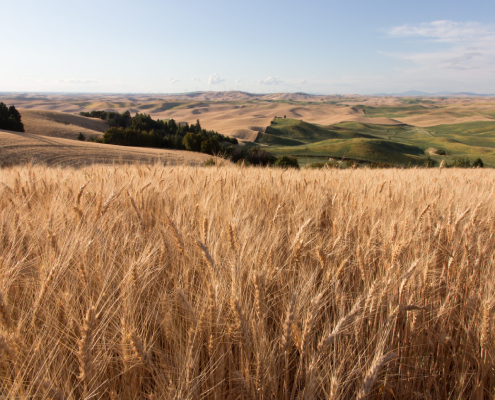By Stephanie Bryant-Erdmann, USW Market Analyst
The USDA held its annual Agricultural Outlook Forum Feb. 23 to 24 where the 2017 Grain and Oilseeds outlook was presented. USDA currently estimates 2016/17 (June to May) wheat acreage at 46.0 million acres (18.6 million hectares), a nine percent decrease from last year.
USDA reported that winter wheat plantings are down 10 percent with the HRW crop having the largest decrease. HRW plantings fell by 12 percent to 23.3 million acres (9.43 million hectares). Soft red winter (SRW) plantings decreased by 300,000 acres (121,000 hectares) to 5.7 million acres (2.3 million hectares). USDA anticipates a 3 percent reduction in spring wheat plantings due to more favorable returns for other commodities. Currently, USDA’s spring wheat and durum acreage projection stands at 13.6 million acres (5.51 million hectares).
Due to the expected reductions in planted area and a return to trend line yields, production will decrease to a projected 50.0 MMT. If realized, that would be down 20 percent year-over-year. Based on trend yields, USDA expects the national average yield to fall to 47.1 bushels per acre (31.6 MT per hectare). USDA projects the wheat harvested-to-planted ratio will be 0.85, on par with 2016/17 and the 5-year average.
Though winter wheat planted area is at its lowest level in 108 years, growing conditions can greatly impact production levels as demonstrated in 2016/17. In February, winter wheat ratings declined in Illinois, Kansas, Montana, Nebraska, North Dakota and South Dakota, according to the monthly USDA Crop Progress report. The biggest change was noted in Montana, where USDA rated 5 percent of winter wheat in good to excellent condition compared to 70 percent in January. The percentage of Oklahoma wheat rated good to excellent increased to 43 percent, up from 33 percent in January. USDA reported 15 percent of Oklahoma wheat in poor or very poor condition, down from 17 percent in January, but significantly higher than the 1 percent poor or very poor on the same date last year. USDA resumes weekly crop progress reporting on April 3.
Large carryover stocks will partially offset the projected lower production, yet the forecast expects total U.S. supplies to decrease in 2017/18. USDA forecasts 2017/18 U.S. supplies at 84.3 MMT, down 9 percent from 2016/17, still 1 percent more than the 5-year average, if realized. Demand in the United States will decline in 2017/18, due to decreased feed usage. USDA anticipates a 2 percent decrease in domestic use, from 33.9 MMT to 33.1 MMT.
Smaller U.S. supplies and competition from other origins are expected to constrain U.S. wheat exports. USDA expects U.S. exports to decline slightly to 26.5 MMT, down 5 percent from the forecasted 2016/17 U.S. wheat export level of 27.9 MMT. U.S. ending stocks are forecast to decrease to 24.6 MMT, down 21 percent year-over-year but still 8 percent above the 5-year average.
To read more from the USDA Outlook Forum or to download presentations, please visit https://www.usda.gov/oce/forum/.






